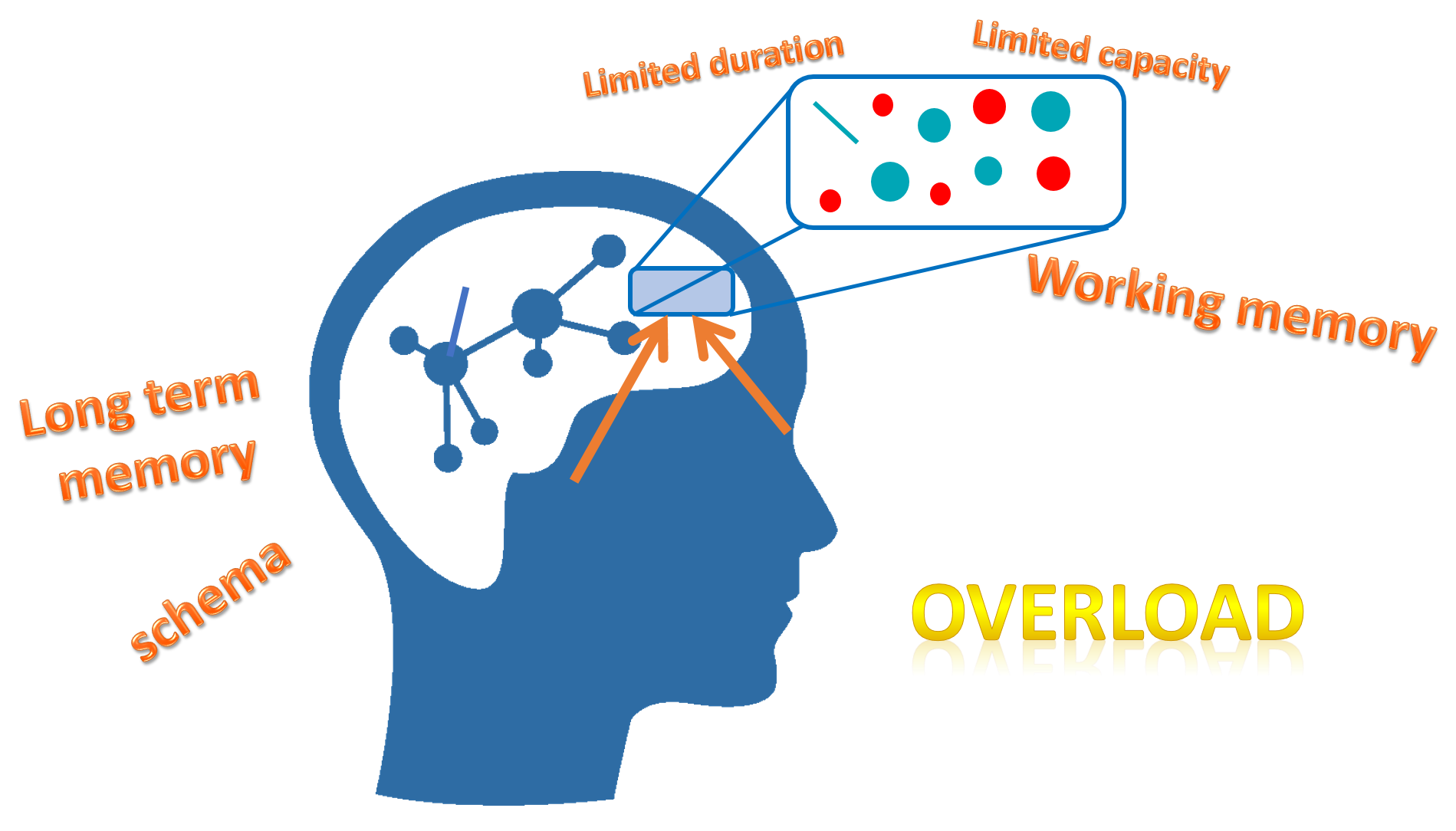Background
Information load and cognitive load are closely related but are different. The resources below help to explain the difference.
Information overload
Information overload is when we are bombarded with so much data that we cannot process any more information – for example, when we are trying to deal with a lot of things at once and we've reached our limit.
Novice learners may need help to learn strategies on how to prevent information overload. For example, some students struggling to understand a concept can think that reading more will help their learning but they really should limit their amount of reading.
Strategies that will help students to prevent information overload include:
- Filtering – focusing attention only on the most useful and essential information
- Limiting – only using the information that they need and knowing when to stop
- Prioritising – determining and approaching the most important tasks first.
Cognitive Load Theory
Cognitive load theory (CLT) is a widely researched information processing theory about the interplay between long-term memory, working memory, and learning. We all have a mostly unlimited long-term memory that is made up of a set of schemas. Schemas can be simple or complex depending on your interest, familiarity and learning of a subject. Schemas connect to other schemas to increase knowledge and complex schemas can be manipulated as one element.
The working memory is our way of accessing our long-term memory and the outside world. Working memory "space" is limited to 7 plus or minus 2 items (limited capacity) and we can only hold onto items for 2 to 3 seconds (limited duration).
We take in external information and connect that with schemas we already have to make sense of the information. This is when we grow new schemas, add to existing schemas and connect schemas together.
What happens when we are overloaded?
If we receive more items than working memory can hold, it leads to cognitive overload. This information (part or all) is dropped from memory. This could mean you have incorrect information encoded in long-term memory or have no learning at all.
Cognitive Load Theory is hugely influential in instruction design (Source: Sweller, J., Ayres, P., & Kalyuga, S. (2011). Cognitive Load Theory. New York: Springer).
How much cognitive load is too much?
Cognitive load is measured by a number of factors. Load = Expertise of learner + complexity of material to be learned + presentation of material
- Expertise of learner: Novice learners are overloaded faster than experts as novice learner schemas are less formed.
- Complexity of material: Break complex materials into smaller parts to help student learning.
- Presentation of material: Lots of resources are available to reduce cognitive load. Presentation is important as it can add load that is not needed.
The aim is to reduce the amount of extraneous load to give us more space in working memory to be able to increase the learning load. This will give us working memory "space" to learn from the problem and to build extra schemas.
| Intrinsic and Extraneous Load | |
Intrinsic = Load needed for learning and understanding. Includes load needed to understand the problem. Extraneous = Load caused by presentation of information or by non-essential information. |

